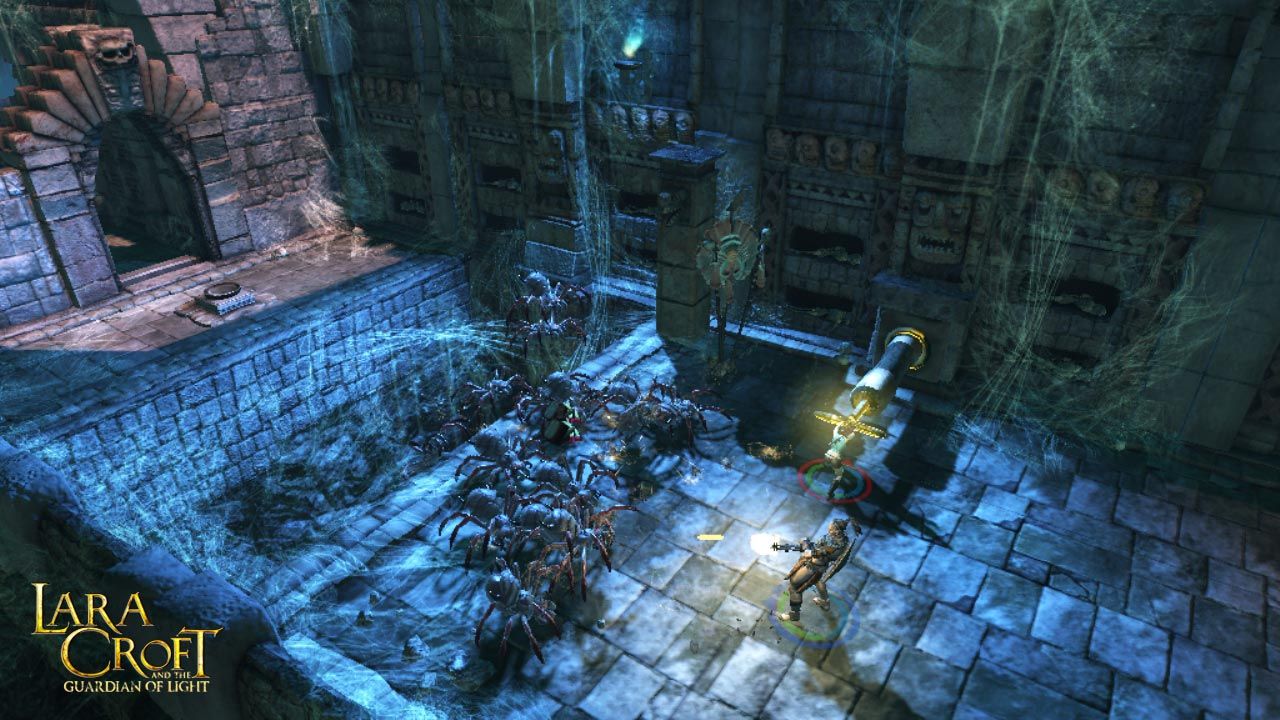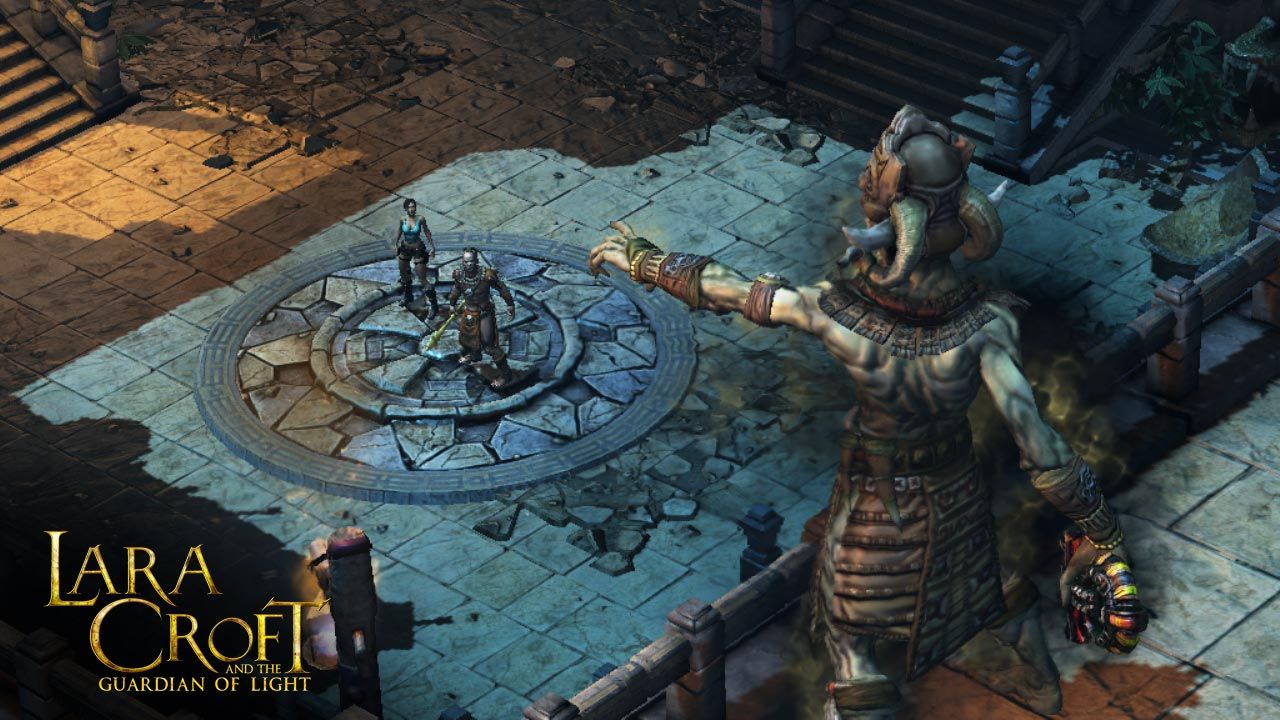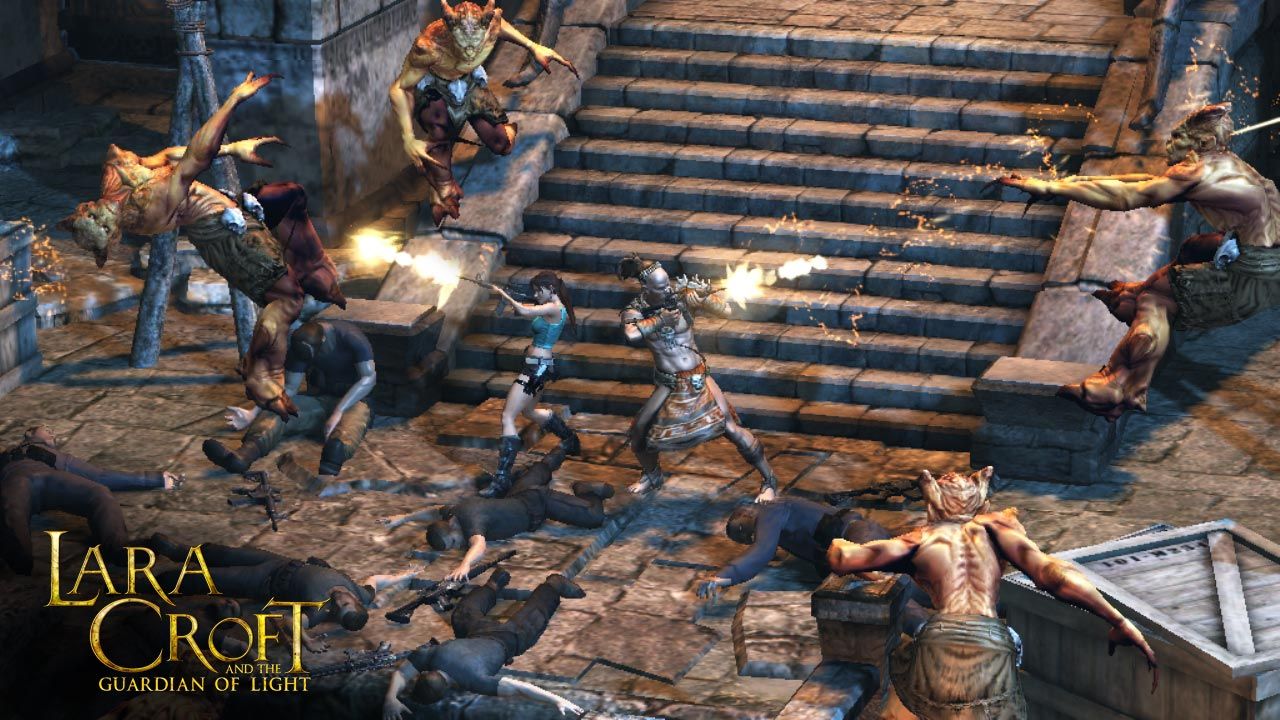Lara Croft and the Guardian of Light Review
Lara Croft has been an iconic character and has appeared in many titles through the years. She has single-handedly carried the Tomb Raider franchise to mainstream popularity, but has recently not enjoyed a lot of success in the gaming field. This resulted in attempts to revive the series with games such as Anniversary, but none of the recent titles managed to recapture the audiences. With Lara Croft and Guardian of Light, the developers Crystal Dynamics decided to take the series in a whole new direction. The result is a game that not only drops the classic Tomb Raider title, but also introduces the character to a whole new gameplay design that works out to be a great change of pace that is able to bring Lara back into the spotlight.

Unlike all previous iterations, Guardian of Light is not a third person 3D action game. Instead, it is a download-only isometric platform action title. Players begin their journey as Lara when she discovers the ancient artifact Mirror of Smoke. The mercenaries she was accompanying betray her and activate the mirror, releasing an ancient evil that sweeps the temple and surrounding jungle. A nearby statue of a Mayan warrior named Totec comes alive, but they are unable to stop the spirit from escaping and must now journey through the cursed lands in order to recover the Mirror. The game’s story is very simple and secondary to the gameplay, there is almost no dialogue and few cutscenes that only show Lara and Totec deciding on the way to advance forward. The plot is minimalistic, easily predicted and just as easily forgotten.
If you’ve played Lara’s previous adventures, there will be a very different feeling when taking on Guardian of Light. It’s more of a spinoff to the franchise than any kind of a sequel, and for the first time ever the series leaves the third person action behind. The game is instead presented as with a top-down camera angle as you guide Lara within 3D environments in an isometric manner. The game also steps back from the linear nature of the series and instead presents a series of levels, each with multiple paths and requirements to retrace your steps. It will take some players time to get used to the fixed camera and control of Lara, but other then that the game doesn’t present many camera or control issues (except the occasional leaps of faith, still problematic to the series’ platforming).
The game is fairly action oriented, and the gunplay plays out similar to other top-down shooters such as Alien Breed or Space Siege. Players can fire in one direction while running or dodging in another. The game’s arsenal is fairly varied, with Lara able to wield pistols, machine guns, rifles, and a grenade launcher. Each weapon has varying stats and consumes the ammo bar at varying rates, with different range and accuracy ratings. Lara herself has a few stats such as health, jumping ability, and damage resistance. These stats can be increased by finding various artifacts though the game and equipping them into one of the available slots. It never feels like the stat increases have a huge impact on the game until the later battles.

The enemies that Lara faces range from skeletons to monsters, all with either a ranged or melee attack. There are also varying sizes of enemies, which take more ammo and effort to take down, and also deal a lot more damage. There isn’t really any AI to speak of, as enemies simply attack the player until they are taken down or are out of range, in which case they just chase you down. The action can get very chaotic and relentless, especially towards the end of the game and with difficult boss battles. Still, players looking for a challenge will have to wait until towards the end of the game before making an effort.
Outside of the action, Lara is free to explore the limited but multipath levels. The game’s story often requires the player to explore the surrounding are and collect a number of items before they can progress. This mechanic allows the levels to expand and present more scenery to explore. Outside of combat, this exploration often entails getting through various puzzles. The actual challenges presented in the game are relatively easy, and rarely rely on any significant player skill or thinking to solve. To counter the relative ease of the main campaign, the game world is littered with small challenge caves. These caves are very small and present a reward if the player is able to reach it. The challenges vary greatly, ranging from a very quick and simple solution to a rather complex set of puzzle elements. The key is that these challenges are all optional and merely present the opportunity to step away from the main story and do a puzzle, which seemingly adds value to the overall experience.
Guardian of Light also features a full fledged co-op mode. This mode wasn’t available at launch of the game, but was later added as a free patch. For the first time in the franchise, Lara is able to get help and take on the main storyline with another player, both online and locally. Totec is the character that joins Lara, and there are various gameplay mechanics that involve both players. For example, Totec is not able to use modern weapons at first, but can later learn to do so from Lara. He can throw spears into walls, onto which Lara can climb to reach a higher ledge – though he’s not able to do so due to his weight. On the other hand, Totec can walk on Lara’s grappling rope while she can only swing across. It’s a great co-op experience, but single-player isn’t hampered by the multiplayer focus for the game. Players can only control Lara when playing alone, and puzzles and enemies in the game are adjusted to accommodate a single player story experience.

Even though the setting is presented with a fixed camera, the game world is full of interesting and detailed locations. As you explore the temple grounds and often wander into the jungle outside, everything is rendered in great contrast and attention to nuances. Since users aren’t able to even zoom in or out, the developers took their time to create the world the way they wanted players to see it. From the dark catacombs, to the lush jungle, to lava pits – the whole game looks great and though it doesn’t break any technological ground, the artistic talent at work shows. The framerate is rock solid, and players should have no problem maxing out the game even on older machines. The sound and music are serviceable, and not particularly spectacular. The voices and dialogue are minimalistic (as reflected by the story itself).
A successful spinoff of a popular action franchise, Lara Croft and the Guardian of Light is a great action puzzler (with emphasis on the action). The game treads not only new ground for the franchise, but also revitalizes the sub-genre that has been rather empty for a long time. The core of the gameplay will be a big change for fans of Tomb Raider and some may not be able to adjust. Still, it’s a rare entry in the genre, and it does everything quite well – from puzzles and action, the game is balanced and fun to play. The co-op (though not included at launch) is playable online and locally, and freshens things up with new enemy numbers and puzzle tweaks. Given its decent length and fair price, as well as the available demo, there is no reason for players not to give the game a try. As long as you don’t go in expecting the classic Tomb Raider formula, you likely won’t be disappointed.
